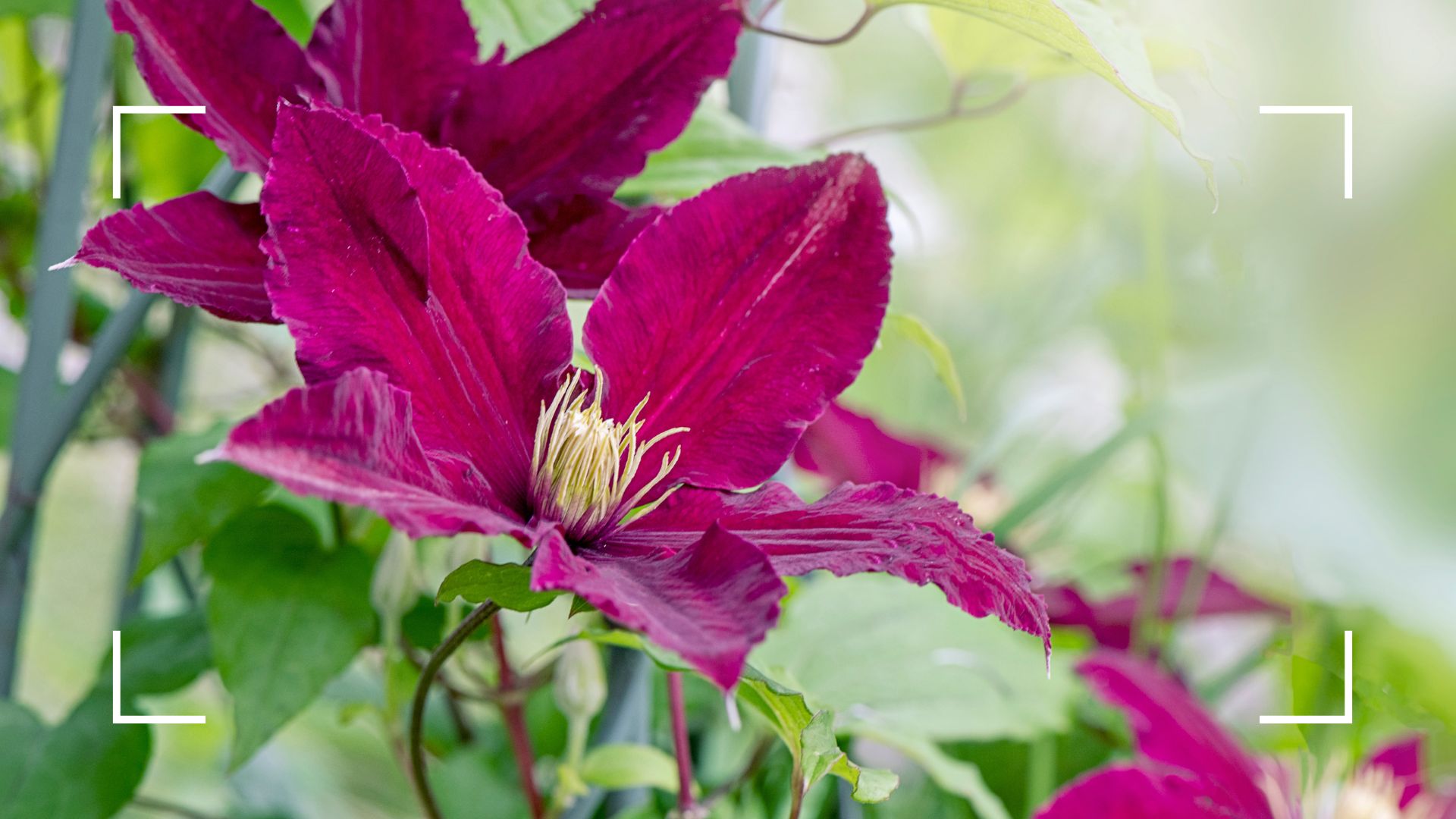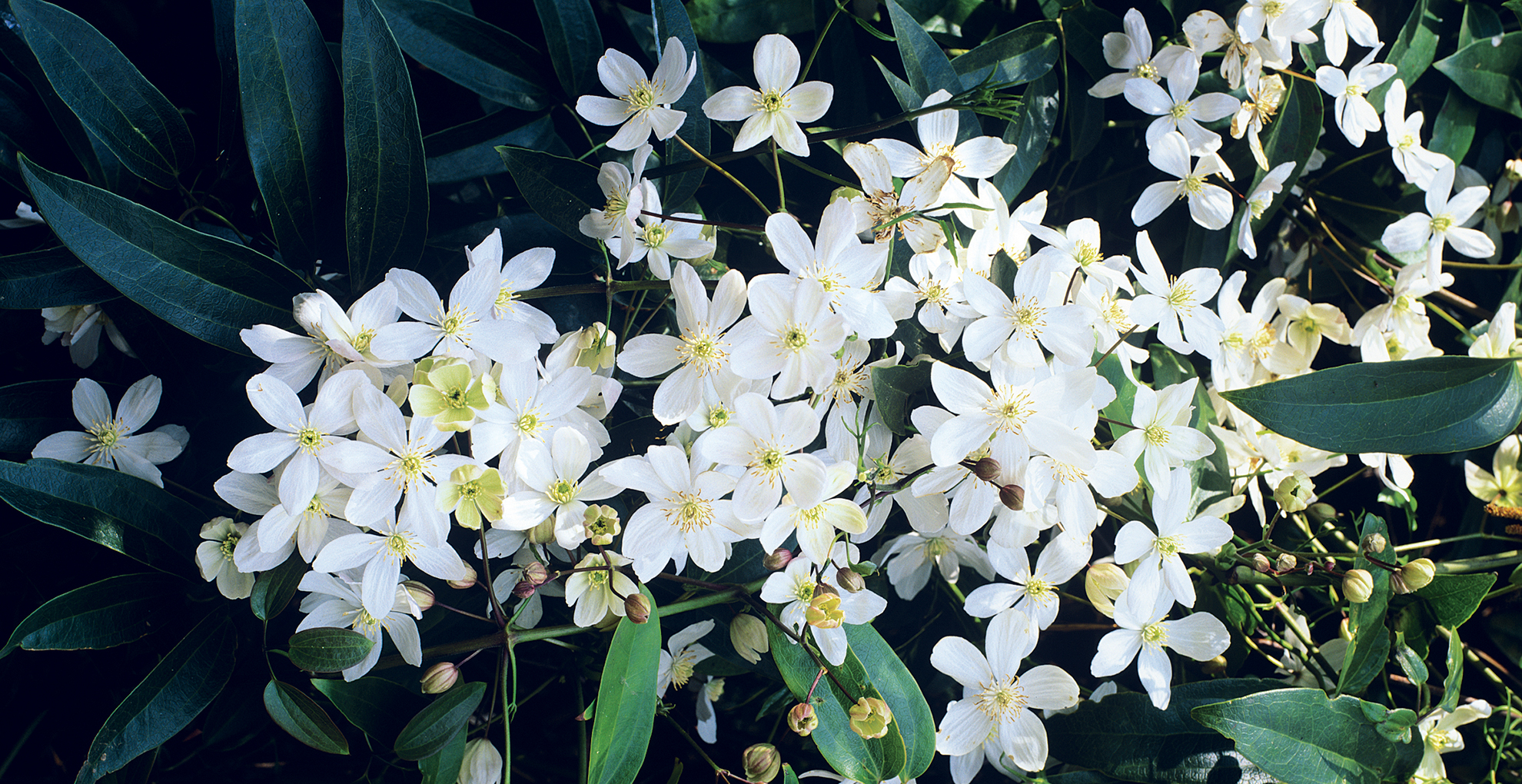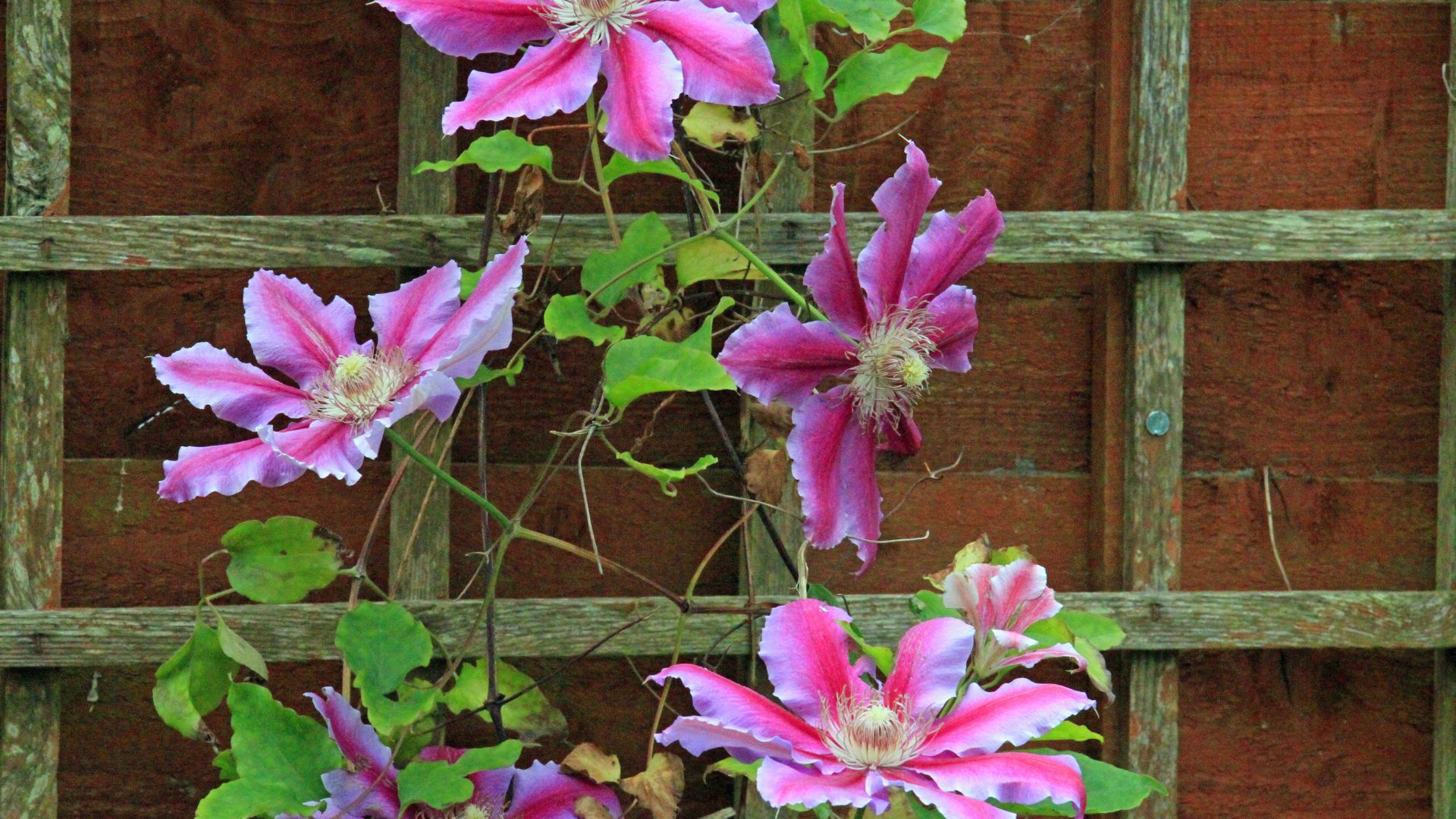
It's sad to see your once blossoming clematis start to wither and brown in parts, so much so you might be eager to cut the dying flowers off. But should you? We asked a plant expert to reveal if you should deadhead clematis or leave it be.
Climbing plants are not only wonderful to add height to your planting scheme they're also great as an outdoor shade idea when grown over an arch or pergola and they can make beautiful privacy plants to cover ugly exterior walls.
And whilst they can usually be left to their own devices, climbers like clematis can suddenly start to wither in places with flowers browning as they die back.
You may be tempted to chop those dying flowerheads off but will it help the plant or hinder future blooms? Here's what the experts say.
Should I deadhead clematis or leave it be?

Whilst you may already know about deadheading tulips and peonies, dealing with a clematis might feel less straightforward.
Sure you can prune clematis, but generally the climbing plant is known for its low-effort high-reward reputation but no one really wants to watch their plant wither away. So the question remains, should you deadhead or let nature take its course?
"Deadheading clematis is usually not necessary," says the lead gardener at Allan's Gardeners, Jane Dobbs. "Due to their tendency to bloom in successive waves throughout the season, most clematis varieties don't benefit much from deadheading."
However, she does say that removing spent blooms can improve the plant's overall appearance and could potentially encourage more flowers to grow – but that is not a given.
What are the benefits of deadheading clematis?

As mentioned previously, the benefits of deadheading clematis aren't exactly as consistent as say deadheading peonies. But you are in for a chance of extra blooms.
Jane explains, "It depends on the type of clematis you have, but deadheading can be helpful occasionally. Deadheading works best for smaller-flowered, repeat-blooming clematis. There's 'Nelly Moser' and 'The President'. They bloom in late spring to early summer on old wood and can bloom again in the summer on new growth. By deadheading Jackmanii' and 'Polish Spirit', you can prolong their blooming cycle and keep the plant looking nice."
"You can extend the blooming period of some clematis varieties by deadheading. The plants don't put energy into seed production when you deadhead them. The plant can then put its energy into growing more flowers and leaves," she continues.
Aside from this, deadheading can also prevent disease and pest infestations as decaying plant material attracts bugs. Jane also points out that removing spent flowers can improve air circulation around the plant which will prevent fungal disease.
So whilst you might not be guaranteed extra blooms there are enough and if you're after sustainable garden ideas why not make the most of the decayed plant matter by making compost at home?
How to deadhead clematis
A simple garden clean-up can be a great way to transform your garden on a budget, especially when discarding dying plants. So if you still want to deadhead your clematis for aesthetic purposes and to have the best chance of new blooms, here's a foolproof method.
"You can deadhead these flowers by only using sharp and clean shears and cutting them back to where the flowers meet the stem above a set of healthy leaves for best-growing results later on," explains professional gardener at Fantastic Gardener's, Petar Ivanov.
Petar then instructs, "Make sure to also not damage any new healthy growth. Afterwards, put mulch and compost around their bases during the summer because clematis thrives best when their heads are in the sun and their roots are in the shade."
So whilst on the whole you certainly don't need to deadhead your clematis there are various benefits to doing so depending on the type of plant you have.
Either way, there's certainly no harm in deadheading your clematis if you follow the method above and only cut off truly withered flowers to keep your well-tended garden trends looking fabulous at all times.







